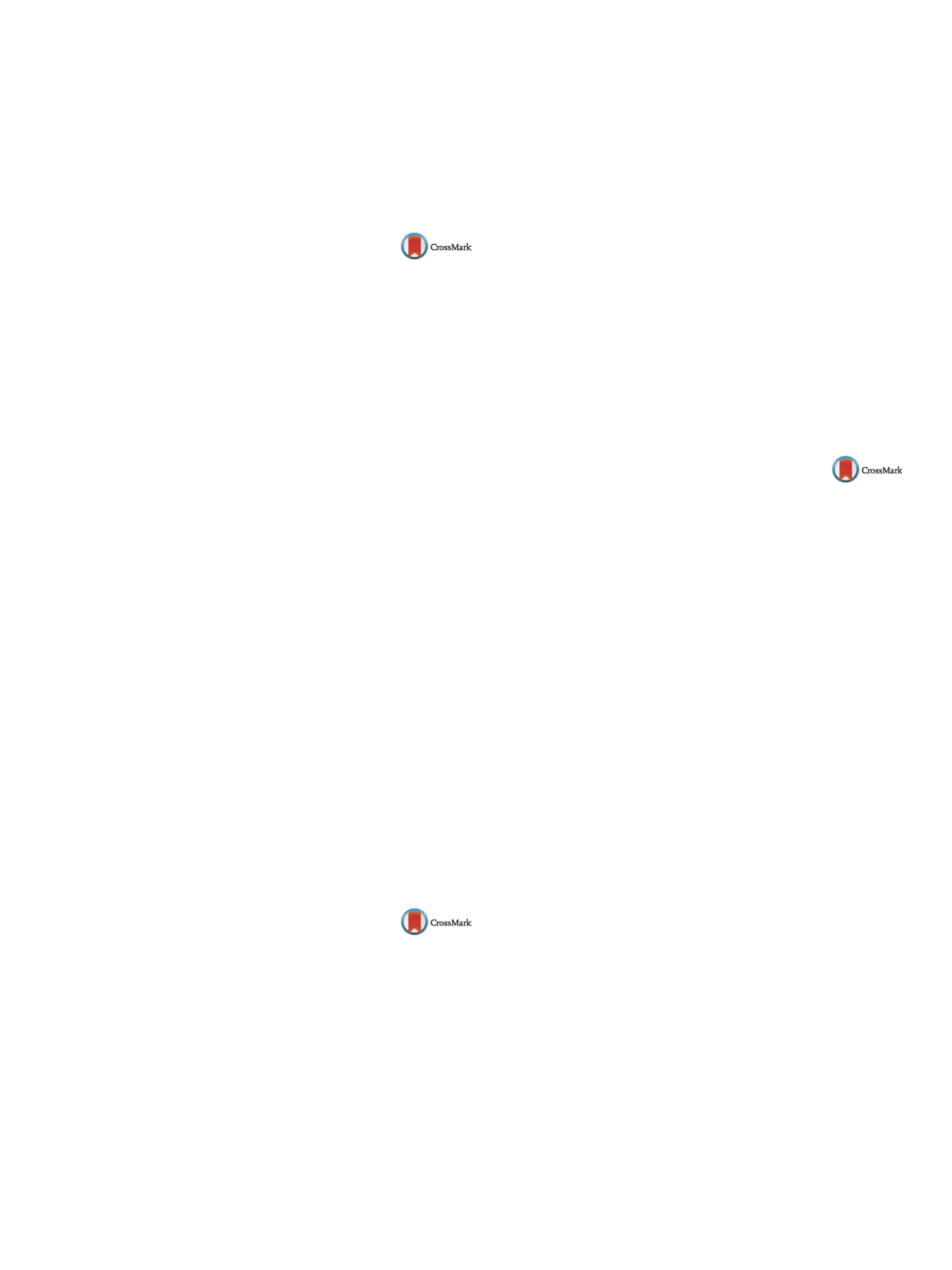

25th European Congress of Psychiatry / European Psychiatry 41S (2017) S170–S237
S211
Conclusions
These preliminaryfindings suggest that platelet fatty
acids may be possible biological markers to improve the diagnosis
of BD.
Disclosure of interest
The authors have not supplied their decla-
ration of competing interest.
http://dx.doi.org/10.1016/j.eurpsy.2017.01.2177EW0308
Bipolar disorder in epilepsy
N. Sivakova
1 ,∗
, G . Mazo
2 , L. Lipatova
11
St. Petersburg Psychoneurological Research Institute named after
V.M. Bekhterev, the Department of epilepsy, Saint Petersburg, Russia
2
St. Petersburg Psychoneurological Research Institute named after
V.M. Bekhterev, the Department psychopharmacology and
pharmacotherapy of patients with resistant conditions with a group
of endocrinology Psychiatry, Saint Petersburg, Russia
∗
Corresponding author.
Introduction
Bipolar disorder (BD) and epilepsy are the chronic
recurrent diseases with several similarities in pathogenic mecha-
nisms. There are high prevalence of comorbidity between affective
disorders and epilepsy. However, most recent studies focused on
association epilepsy with depression, while lack of scientific data
about relationship between epilepsy and BD.
Objectives
This study examined the frequency of bipolar disorder
in epileptic patients.
Aims
To improve the diagnostic tool for BD in epileptic patients.
Materials and methods
We observed 50 patients with epilepsy
(PE). In this study, the symptoms of BD were measured by the
Hypomania Checklist-32 (HCL-32).
Results
The mean age of the entire cohort was 40 (SD = 19.2)
years. The proportion of females were 62%. The mean score using
HCL-32 were 11.1 (SD = 4.5, range: 3–20) with 17 (34%) scoring
above 14, the cut-off points for the basic version of the HCL-32.
Among of high score subgroup there were 6 men and 11 women,
maximum age was 74 and minimum 19, the mean age of the sub-
group were 37 years. The patients 8 out of 17 (47%) received a
score of 20 or more (maximum of 37) on the bipolar index that
corresponds to
≥
20% probability BD.
Conclusion
The results of the study observed a high prevalence of
BD in PE. Future research addressing (1) using of psychiatric exam-
ination instruments to assess affective symptoms among PE and
(2) treatment management of affective symptoms by antiepilep-
tic drugs might result in better treatment outcomes among patient
with comorbidities of BD and PE.
Disclosure of interest
The authors have not supplied their decla-
ration of competing interest.
http://dx.doi.org/10.1016/j.eurpsy.2017.01.2178EW0309
Early and late onset bipolar disorders
in older adults
N. Smaoui
1, L. Zouari
2, N. Charfi
2 ,∗
, M. Maâlej-Bouali
2,
N. Zouari
2, J. Ben Thabet
2, M. Maâlej
21
Hedi Chaker University Hospital, Department of Psychiatry, Hedi
Chaker University Hospital, sfax, Tunisia
2
Hedi Chaker University Hospital, Department of Psychiatry C, Hedi
Chaker University Hospital, sfax, Tunisia
∗
Corresponding author.
Introduction
Age of onset of illness may be useful in explaining
the heterogeneity among older bipolar patients.
Objective
To examine the relationship of age of onset with clin-
ical, demographic and behavioral variables, in older patients with
bipolar disorder.
Methods
This was a cross-sectional, descriptive and analytical
study, including 24 patients suffering from bipolar disorders, aged
65 years or more and followed-up in outpatient psychiatry unit
at Hedi Chaker university hospital in Sfax in Tunisia. We used a
standardized questionnaire including socio-demographic, behav-
ioral and clinical data. Age of onset was split at age 40 years into
early-onset (< 40 years;
n
= 12) and late-onset (
≥
40 years;
n
= 12)
groups.
Results
The mean age for the entire sample was 68.95 years.
The mean age of onset was 39.95 years. The majority (60%) of
patients were diagnosedwith bipolar I. Fewmeaningful differences
emerged between early-onset and late-onset groups, except that
tobacco use was significantly higher in the late-onset group (66.6%
vs. 16.6%;
P
= 0.027). No significant differences between the early-
onset and late-onset groups were seen on demographic variables,
family history and number of medical diagnoses or presence of
psychotic features.
Conclusion
Our study found few meaningful behavioral differ-
ences between early versus late age at onset in older adults with
bipolar disorder.
Disclosure of interest
The authors have not supplied their decla-
ration of competing interest.
http://dx.doi.org/10.1016/j.eurpsy.2017.01.2179EW0310
Cultural variations in bipolar
disorders in non-clinical samples
H. Aldos , H. Merey , A. Soliman
∗
Qatar University, Social Sciences Department, Doha, Qatar
∗
Corresponding author.
Introduction
The prevalence of bipolar disorder (BD) is con-
tinuously increasing worldwide. Based on pathophysiological
prospective, BD is related to the change in neural circuitry involved
in the regulation of emotion. Since there is a cultural variation in
emotion expression, it is expected that BD is subject to cultural
differences. The literature suggests that the prevalence of BD is
influenced by gender, region and ethnicity.
Objectives
Exploring the pervasiveness of BD in the Arab cultures.
Aims – exploring the pervasiveness of BD in six different but related
Arab cultures;
– examining the gender differences in BD in the Arab cultural con-
text.
Methods
This study used 327 freshmen university students (42%
males and 58% females) from six different Arab universities and
administered theMoodDisorder Questionnaire (MDQ). The validity
and reliability of the MDQ was measured on 220 Qatari university
students.
Results
The results showed that BD was positively related to
age and that males exhibited greater BD symptoms than females.
The MDQ scores varied between the Arab subcultures. Sudanese
subjects scored the highest on the MDQ, and therefore showed
the highest numbers of BD characteristics, followed by Palestini-
ans, Egyptians, Yemenis, Qataris, Jordanians and Tunisians. The
Tunisians exhibited the lowest BD symptoms among six Arab cul-
tures.
Conclusions
The findings suggested that it is arguable that BD
is sensitive to cultural variations in the Arab world, with males
showing a higher number of bipolar symptoms. It is arguable that
BD is influenced by cultural openness and socioeconomic status.
Disclosure of interest
The authors have not supplied their decla-
ration of competing interest.
http://dx.doi.org/10.1016/j.eurpsy.2017.01.2180

















